Beta Carotene: Nature's Provitamin A Powerhouse – Supply, Science & Superior Taas nga kalidad
1. Unsa ang Beta-Carotene?
Ang Beta-carotene (β-carotene) usa ka lagsik nga pula-kahel provitamin A carotenoid, kasagaran anaa sa mga tanom ug microorganisms. Kini mao ang esensya ang labing kusgan nga pasiuna sa retinol (bitamina A) sulod sa lawas sa tawo. Sa kemikal nga pagkategorya isip a tetraterpenoid, ang pagtukod niini naglangkob sa duha ka retinyl teams nga gisumpay sa usa ka polyene chain, nga responsable sa pagkolor niini ug antioxidant properties. Sukwahi sa preformed vitamin A (retinol, retinal, retinoic acid), ang beta-carotene giusab ngadto sa lagsik nga bitamina A. lamang sa gusto pinaagi sa lawas, nga makapakunhod pag-ayo sa kahigayonan sa hypervitaminosis A toxicity. Ang mga dagkong tahas niini naglakip sa pagserbisyo isip a hinungdanon nga suplay sa pagkaon sa bitamina A ug nagpakita isip a kusgan nga antioxidant nga matunaw sa lipid, pag-neutralize sa mga delikado nga free radicals ug reactive oxygen species (ROS).
2. Suplay sa Produkto, Mga Kinaiya sa Kemikal ug Mga Pangunang Identifier
-
Panguna nga Natural nga Tinubdan: Daghan sa orange ug dalag nga mga prutas ug mga utanon (carrots, candy patatas, pumpkins, mangga, apricots), darkish leafy greens (spinach, kale), purple palm oil, ug sure algae (eg, Dunaliella salina).
-
Mga Kinaiya sa Kemikal:
-
Molekular nga mga sangkap: C₄₀H₅₆
-
Molekular nga Timbang (MW): 536.87 g/mol
-
Tan-awa: Lalim nga pula-orange hangtod sa purpura nga kristal nga powder o resolusyon.
-
Solubility: Labaw nga matunaw sa natural nga mga solvent (chloroform, benzene), halos dili matunaw sa tambok ug lana, halos dili matunaw sa tubig. Ang solubility mahimong mapalambo pinaagi sa pormulasyon (emulsions, micelles).
-
Kalig-on: Delikado sa malumo, kainit, ug oksihenasyon. Nagkinahanglan og kaluwasan (antioxidants, inert ambiance, opaque packaging).
-
-
Panguna nga mga Identifier:
-
Gidaghanon sa Registry sa CAS: 7235-40-7
-
Gidaghanon sa EC (EINECS): 230-636-6
-
3. Pag-ila sa Sobra-Taas nga kalidad nga Beta-Carotene: Pangunang mga Hiyas
Ang pagpili sa "labing dako" nga beta-carotene nagkinahanglan og pag-usisa sa daghang mga importanteng sangkap:
-
Supply ug Kaputli: Lakaw alang sa lunsay, gikan sa tanom tinubdan (sama sa Dunaliella salina o marigold extracts) kay sa artipisyal nga mga variation para sa superyor nga bioavailability ug pagpili sa mamalitay. Ang kaputli mao ang labaw sa tanan. Pangitaa ang kaputli nga napamatud-an sa HPLC nga labaw sa 96%, labing maayo nga> 99%. Ang mga hugaw makapakunhod sa kaepektibo ug makahatag ug peligro sa seguridad.
-
Komposisyon: Ipiho ang isomeric nga profile. tanan-trans Ang beta-carotene mao ang una nga energetic nga tipo, bisan pa ang pipila cis-isomer natural nga mahitabo ug adunay hingpit nga lainlain nga bioavailability.
-
Kaepektibo ug Bioavailability: Siguroha nga ang produkto nagpakita sobra nga pagka-epektibo sa bioconversion sa retinol. Paggamit sa mga pormulasyon emulsion applied sciences (eg, beadlets, nanoemulsions) makapauswag sa pagsuyup sulod sa tinai. Pagsulay sa kalig-on ubos sa may kalabutan nga mga kahimtang (kainit, malumo, pH) importante.
-
Pagsunod: Kinahanglan nga sundon ang estrikto mga kinahanglanon sa pharmacopoeial sa tibuuk kalibutan (USP, EP, JP) ug may kalabutan mga balaod sa pagkaon/dugang (FDA GRAS, EU Novel Meals, JECFA). Estrikto pagdumala sa kontaminante (mga bug-at nga metal, pestisidyo, solvent, mikrobyo) dili ma-negotiable.
-
Sinugdanan ug Paggama: Pagsubay sa respetado nga mga tinubdan ug GMP-certified nga mga pasilidad sa paggama mga timailhan sa taas nga kalidad ug seguridad. Ang malungtarong mga gawi sa pagpangita makadugang bili.
-
Kaayohan ug Mekanismo:
-
Pag-ehersisyo sa Provitamin A: Importante alang sa imaginative ug prescient (rhodopsin synthesis), immune operate (lymphocyte differentiation), mobile progress/differentiation, ug replica.
-
Poten nga Antioxidant: Gipalong ang singlet nga oxygen ug gitangtang ang mga free radical, gidepensahan ang mga lipid, protina, ug DNA gikan sa kadaot sa oxidative, nalambigit sa pagkunhod sa hulga sa padayon nga mga sakit (sigurado nga mga kanser, mga problema sa kasingkasing, pagkadaot sa macular nga may kalabutan sa edad).
-
Kaayohan sa panit ug pores: Nakatampo sa mga pores ug pigmentation sa panit (delikado nga purong sunscreen), nagtabang sa mga pores ug babag sa panit nga molihok, ug nakigbatok sa photoaging pinaagi sa paglihok sa antioxidant.
-
Immune Modulation: Nagpauswag sa mga tubag sa immune nga gipataliwala sa cell ug paghimo sa antibody.
-
-
Kada adlaw Konsumo ug Dosis:
-
Walay usa ka RDA alang sa beta-carotene mismo. Ang mga kinahanglanon gipahayag ingon Retinol Exercise Equivalents (RAE).
-
1 mcg RAE = 12 mcg dietary beta-carotene (gikan sa mga pagkaon) o 2 mcg supplemental beta-carotene (tungod sa pormulasyon nga mga kalainan).
-
Igo nga Konsumo (AI) alang sa Bitamina A (Mga hamtong): 700-900 mcg RAE/adlaw para sa mga lalaki, 600-700 mcg RAE/adlaw para sa mga babaye.
-
Kasagaran nga Complement Dosis: Lainlain gikan sa 3 mg hangtod kinse mg kada adlaw. Ang sobra nga dosis nga suplemento (>20 mg/adlaw) kinahanglan nga medikal nga bantayan, labi na sa mga tawo nga nanigarilyo. Pag-atubang una sa mga tinubdan sa pagkaon.
-
-
Paggamit: Nahiusa sa softgels, papan, kapsula, mapuslanon nga mga pagkaon, ilimnon, mga kosmetiko (mga lotion, serum). Pag-obserbar sa partikular nga pag-label sa produkto.
-
Mga Tan-aw sa Tumong: Ang mga tawo nga adunay limitado nga pagkonsumo sa bitamina A, kini sa pagpangita sa antioxidant nga tabang, pagsuporta sa mga pores ug kahimsog sa panit, partikular nga mga populasyon sa siyensya sa ilawom sa pagdumala.
-
Mga Pag-amping ug Resulta sa Facet:
-
Kasagaran maayo ang pagtugot sa tinuod nga mapuslanon nga mga dosis.
-
Sobra nga Dosis (>30 mg/adlaw): Mahimong hinungdan inosente apan mabalik nga carotenodermia (yellow-orange nga mga pores ug pagkadaot sa panit, ilabina ang mga palad/soles).
-
Mga tawo nga nanigarilyo: Ang pipila ka higanteng panukiduki (ATBC, CARET) nalambigit taas nga dosis nga artipisyal nga beta-carotene mga suplemento sa pagkaon sa taas nga baga nga kadaghanan sa mga kanser naghulga sa mga bug-at nga tawo nga nanigarilyo / alkohol nga kustomer. Ang natural nga beta-carotene gikan sa mga pagkaon/mga suplemento sa pagkaon sa kasagarang dosis DILI nalangkit niini nga hulga. Ang mga tawo nga nanigarilyo kinahanglan nga maglikay sa taas nga dosis nga gilay-on nga mga suplemento sa pagkaon hangtod nga gisugyot sa bisan unsang ubang kaso.
-
Pagmabdos/Pagpasuso: Luwas gikan sa mga pagkaon; taas nga dosis nga mga suplemento sa pagkaon ubos lamang sa medikal nga pagdumala.
-
Interaksyon: Orlistat, bile acid sequestrants (cholestyramine, colestipol), mineral nga lana mahimong mokunhod sa pagsuyup.
-
-
Contraindications: sobrang pagkasensitibo. Paggamit ug pasidaan sa mga nag-antos sa hypercarotenemia o grabeng sakit sa atay/kidney.
4. Shaanxi Zhonghong Investment Technology Co., Ltd.: Ang Imong Gisaligan nga Beta-Carotene Associate
Shaanxi Zhonghong Investment Technology Co., Ltd. nagbarog isip usa ka premier vertically built-in nga high-tech nga negosyo gipahinungod sa kabag-ohan sa chemistry, suplay, ug siyensya sa kinabuhi. Uban sa 28 ka tuig nga espesyal nga kasinatian sa bioactive compounds, kita milabaw sulod sa pagkuha, pag-inusara, pagputli, ug labaw nga pagpauswag sa gamit sa mga potent constituents sa tanum.
-
Panguna nga Kompetensiya: Natural nga Pagkuha sa Tanum, Mga Aktibo sa Katahum, Mga sangkap sa Pharma ug Nutraceutical, Natural nga mga Pigment, Mga suplemento sa pagkaon, Mga sangkap sa pagkaon ug ilimnon, Natural nga mga Patam-is.
-
Siyentipikanhong Kabatid (Mga Limitasyon sa R&D):
-
Joint Innovation: Estratehikong pakigtambayayong sa 5 nga nag-unang unibersidad pinaagi sa dedikado nga joint laboratories.
-
IP Portfolio: Pagpanag-iya sa 20+ proprietary nga mga patente, pagpanalipod sa labing maayo nga mga pamaagi sa pagkuha ug pagputli.
-
Talagsaon nga Compound Library: Usa ka talagsaon nga repository sa tibuok kalibutan nga makahimo sa pagdiskobre ug pag-customize sa nobela.
-
-
Chopping-Edge Taas nga kalidad nga Infrastruktura:
-
Superior nga Analytics: Gisul-ob sa HPLC (Sobra-Episyente nga Liquid Chromatography), UHPLC (Extremely-HPLC), ug NMR (Nuclear Magnetic Resonance) Spectrometry para sa dili hitupngan nga structural affirmation ug purity verification.
-
Labaw nga Kaputli: Ang among higpit nga mga protocol kanunay nga naghatag beta-carotene nga adunay mga kinahanglanon sa kaputli nga milabaw sa aberids sa negosyo sa sobra sa 20%.
-
-
Kadena sa Paghatag sa Kalibutan: Lig-on nga pag-alagad sa komunidad sa pag-apod-apod 80+ internasyonal nga mga lokasyon sa tibuok Asya, Uropa, ug sa Amerika, nagtanyag gipili nga mga kapilian sa sangkap sa mga multinasyunal nga kompanya sa parmasyutiko, mga establisemento sa pagtuki, ug nag-unang mga tiggama sa FMCG.
Beta-Carotene: Pag-abli sa Gikumpirma nga Kaayohan sa Kaayohan
-
Imaginative ug prescient nga Tabang: Elementarya para sa retinal operate ug low-light imaginative ug prescient.
-
Pagpalambo sa Immune System: Importante alang sa pagpadayon sa mucosal boundaries ug immune cell operate.
-
Isog nga Antioxidant Protection: Gipanalipdan ang mga mobile nga konstruksyon gikan sa oxidative stress, usa ka hinungdanon nga hunahunaon ang pagkatigulang ug padayon nga sakit.
-
Mga pores ug panit Vitality & Safety: Nagpasiugda sa maayo nga mga pores ug pagbag-o sa panit, naghatag ug delikado nga UV nga kaluwasan (gisagol sa mga sunscreens), ug nakigbatok sa oxidative pores ug kadaot sa panit.
-
Kaayohan sa Mobile ug Komunikasyon: Nagtabang sa regular nga pag-uswag sa selula, pagkalahi, ug regulasyon sa gene.
Kompleto nga Product Specification & Certificates of Evaluation (COA)
| Klase sa Kontaminante | Parameter | Espesipikasyon Limitahan | Tan-awa ang Teknik (Reference) |
|---|---|---|---|
| MGA PESTISIDAD | |||
| Acepate | ≤ 0.01 mg/kg | GB 23200.113-2018 / EU SANTE/11320/2019 | |
| Mga chlorpyrifos | ≤ 0.01 mg/kg | GB 23200.113-2018 / EU SANTE/11320/2019 | |
| Cypermethrin | ≤ 0.05 mg/kg | GB 23200.113-2018 / EU SANTE/11320/2019 | |
| Dichlorvos | ≤ 0.01 mg/kg | GB 23200.113-2018 / EU SANTE/11320/2019 | |
| Tibuok DDTs | ≤ 0.05 mg/kg | GB 23200.113-2018 / EU SANTE/11320/2019 | |
| MGA BUG-ON NGA METAL | |||
| Tingga (Pb) | ≤ 2.0 mg/kg | ICP-MS (USP <232>/EP 2.4.8) | |
| Arsenic (As) | ≤ 1.0 mg/kg | ICP-MS (USP <232>/EP 2.4.8) | |
| Cadmium (Cd) | ≤ 0.5 mg/kg | ICP-MS (USP <232>/EP 2.4.8) | |
| Mercury (Hg) | ≤ 0.1 mg/kg | ICP-MS / AAS (USP <232>/EP 2.4.8) | |
| MICROBIOLOGY | |||
| Tibuok Plato Nagdepende | ≤ 10,000 CFU/g | USP <61>/EP 2.6.12 | |
| Lebadura ug agup-op | ≤ 500 CFU/g | USP <61>/EP 2.6.12 | |
| Escherichia coli | Wala sa 1g | USP <62>/EP 2.6.13 | |
| Salmonella spp. | Wala sa 10g | USP <62>/EP 2.6.13 | |
| Staphylococcus aureus | Wala sa 1g | USP <62>/EP 2.6.13 | |
| Espesye sa tanom nga bulak ang Pseudomonas aeruginosa | Wala sa 1g | USP <62>/EP 2.6.13 |
Obserbahi: Ang mga specs kay nagpaila ug nag-una base sa tipikal nga pagkaon/mga kinahanglanon sa grado sa pharma. Tukma nga COA nga gihatag matag batch.
Superior nga Workflow sa Paggama
Ang beta-carotene manufacturing leverage ni Zhonghong proprietary extraction ug purification know-how:
-
Pagkuha ug Pretreatment: Gidaghanon sa premium Dunaliella salina biomass o mga materyales sa tanum. Paggaling, pagpauga.
-
Supercritical Fluid Extraction (SFE) / Solvent Extraction: Naggamit sa mga solvent nga grado sa pagkaon o superkritikal nga CO₂ para sa mahigalaon sa palibot, pinili nga pag-inusara sa mga carotenoid ubos sa pagdumala sa temperatura/stress.
-
Focus: Pagtangtang sa bulk solvent sa ilawom sa vacuum.
-
Multi-Stage Chromatographic Purification: Pangandam nga HPLC o adsorption chromatography nakab-ot ang labing taas nga kaputli (> 99%), pagwagtang sa mga isomer, xanthophylls, ug nahabilin nga mga solvent.
-
Crystallization: Gidumala ang crystallization aron makuha ang espesipikong matang sa kristal ug pag-apod-apod sa dimensyon sa partikulo.
-
Pagpalig-on ug Pagporma (Dili obligado): Pagbalhin ngadto sa mga suspensyon sa lana, mga pulbos nga masabwag sa tubig (mga beadlet), o mga emulsyon nga naggamit encapsulation matrices (gelatin, starch, gum acacia) ug mga pamaagi sa antioxidant (tocopherols, ascorbyl palmitate).
-
Pagpauga: Pag-spray sa pagpauga o freeze-drying alang sa powdered kinds.
-
Estrikto nga Taas nga kalidad nga Pagdumala (QC): Estrikto Pagsusi sa HPLC/UHPLC, bug-at nga steel evaluation (ICP-MS), pagsusi sa salin sa pestisidyo (GC-MS/MS, LC-MS/MS), microbiological nga pagsulay, nahabilin nga solvent evaluation (GC), ug mga eksaminasyon sa physicochemical (pagkawala sa pagpauga, solubility, partikulo dimensyon) garantiya sa pagsunod.
Estrikto nga High Quality Management Protocol
Sa Zhonghong, Taas nga kalidad pinaagi sa Disenyo (QbD) Ang mga ideya nagpaluyo sa among paggama sa beta-carotene. Atong Ang ISO 17025 nga akreditado nga laboratoryo nagpatuman sa usa ka multi-tiered QC nga teknik:
-
Dili luto nga mga Materyal nga Kwalipikasyon: Hugot nga pag-screen sa umaabot nga biomass/solvents padulong sa gitakda nang daan nga mga spec.
-
In-Course of Controls (IPC): Importante nga mga parameter (solvent ratios, temperatura, stress, singil sa sirkulasyon, purity checkpoints) gimonitor ang tanan pinaagi sa pagkuha ug pagputli pinaagi sa PAT (Course of Analytical Expertise) mga instrumento sama sa inline spectrophotometry.
-
Katapusan nga Pagsulay sa Paglansad sa Produkto: Ang matag batch moagi sa bug-os nga compendial testing kada USP-NF <601> Carotenoids ug EP Monographs, uban sa:
-
Id: FTIR, UV-Vis Spectrophotometry, HPLC retention time match.
-
Pagsusi ug Kaputli: HPLC/UHPLC nag-ihap sa tanan-trans beta-carotene ug kaubang mga substansiya/isomer padulong sa mga kinahanglanon sa pakisayran sa USP/EP. Ang kaputli kasagaran molapas sa 99.0%.
-
Kontaminante: ICP-MS alang sa bug-at nga mga metal (Pb, As, Cd, Hg), GC-MS/MS ug LC-MS/MS alang sa mga residu sa pestisidyo nga nagsunod sa estrikto nga EU MRLs, LAL tan-awa alang sa mga endotoxin (kon may kalabutan), puno microbiological enumeration ug pagsulay sa pathogen.
-
Physicochemical Properties: Pagkawala sa pagpauga, nahabilin sa ignition, solubility, pagtimbang-timbang sa dimensyon sa partikulo (laser diffraction), partikular nga optical rotation.
-
-
Pagtuon sa Kalig-on: Aktuwal nga oras ug gipadali ICH Q1A(R2) uyon sa mga pakete sa kalig-on aron matino ang estante sa kinabuhi ug mga kahimtang sa pagtipig.
-
Dokumentasyon ug Pagsubay: Puno GMP nga dokumentasyon, digital batch information (EBR), ug kompleto COA para sa bug-os nga pagsubay gikan sa hilaw nga materyales ngadto sa nahuman nga produkto.
Packaging ug World Logistics
-
Panguna nga Packaging: Multi-layered aluminum foil bagahe nga adunay sulud nga polyethylene lining (5kg, 10kg, 25kg web) sa ilawom nitrogen flush aron mahunong ang oksihenasyon. Dugang nga accessible sa Mga tambol sa HDPE nga adunay dobleng LDPE liner alang sa mas dagkong mga bahin.
-
Ikaduha nga Pagputos: Lig-on mga karton nga fiberboard.
-
Pagtipig: Tindera ubos sa 25°C (77°F) sa a bugnaw, uga nga dapit. Panalipdi gikan sa malumo, kaumog, ug oksiheno. Ipadayon ang selyado nga pakete hangtod magamit.
-
Kinabuhi sa estante: 24 ka bulan gikan sa petsa sa paghimo kung gitipigan nga tukma sa wala maablihan nga talagsaon nga pakete.
-
Logistics: Ang transportasyon sa kalibutan pinaagi sa kargamento sa hangin, kargamento sa dagat (FCL/LCL), o piho nga courier. Nagsunod sa Mga balaod sa IATA/IMDG. Bugnaw nga mga kapilian sa kadena accessible alang sa delikado nga mga pormulasyon.
Mga Mekanismo sa Kaayohan, Pagbag-o ug Pag-analisa sa mga Frontiers
-
Mekanismo sa Paglihok: Enzymatic cleavage pinaagi sa BCO1 (Beta-Carotene Oxygenase 1) sulod sa gut mohatag retinaldehyde, mikunhod ngadto sa retinol. Ang paglihok sa antioxidant mahitabo pinaagi sa switch sa elektron ug pagporma sa radikal nga pagdugang, pagpalong sa singlet oxygen (
¹O₂) ug peroxyl radicals (ROO•). Modulates Nrf2/ARE nga agianan pagpukaw sa endogenous antioxidant enzymes. -
Pang-industriya nga Kalihokan:
-
Nutraceuticals: Mga suplemento sa pagdiyeta sa bitamina A, pagsagol sa antioxidant, pagporma sa pagtabang sa immune.
-
Pagkaon ug Ilimnon: Natural nga colorant (E160a), fortification sa dairy, juices, linuto nga mga butang, confectionery.
-
Mga kosmetiko: Anti-aging lotions, serums, solar care merchandise (antioxidant enhance), lipsticks.
-
Pagpakaon sa Hayop: Ang feed sa manok alang sa yolk pigmentation, aquaculture alang sa pagkolor sa unod.
-
-
Mga Pag-uswag ni Zhonghong:
-
Gipalambo nga Bioavailability nga mga Pormulasyon: Proprietary mga nanoemulsion ug self-microemulsifying drug supply method (SMEDDS).
-
Pagpalig-on Applied sciences: Labaw encapsulation matrices ug synergistic antioxidant blends.
-
Malungtarong Pagkuha: Pag-optimize sa SFE-CO₂ alang sa pagkunhod sa solvent waste ug konsumo sa kalagsik.
-
-
Pag-analisar sa mga utlanan ug mga hagit:
-
Personal nga Pagkaon: Pagsabot sa genetic polymorphism (pananglitan, BCO1) nga nakaapekto sa pagka-epektibo sa pagkakabig.
-
Paglikay sa sakit: Pagpatin-aw sa mga tahas sa kadaghanan sa mga kanser nga chemoprevention, cardiovascular nga kaayohan, ug pag-us-os sa panghunahuna sa milabay nga nag-una nga pagkorihir sa kakulangan. Mga relasyon sa pagtubag sa dosis ug Interaksyon sa lainlaing mga micronutrients (bitamina E, selenium) kinahanglanon.
-
Bioavailability Engineering: Paghimo sa sunod-gen nga mga pamaagi sa suplay alang sa labing kadaghan nga pag-alsa ug pag-focus sa tisyu.
-
Artipisyal nga Biology: Mga mikrobyo sa engineering alang sa malungtaron, taas nga ani nga paggama sa beta-carotene.
-
Kanunay nga Gihangyo nga mga Pangutana (FAQ)
-
P: Ang imong beta-carotene synthetic o natural?
-
A: Nag-concentrate mi sa high-purity purong beta-carotene, una nga gikuha gikan sa Dunaliella salina mga tinubdan sa algae o tanom nga naggamit sa labaw nga mga estratehiya.
-
-
P: Unsang purity degree ang imong gipasalig?
-
A: Ang among naandan nga beta-carotene nga mga kristal kasagaran molapas 99.0% kaputli (HPLC assay, tanan-trans), labaw pa kaayo sa mga lagda sa negosyo. Nahiangay nga mga kaputli ma-access.
-
-
Q: Naghatag ka ba og mga matang nga matunaw sa tubig?
-
A: Sigurado, naghimo kami bugnaw-tubig-dispersible beadlet pormulasyon paggamit sa starch o gelatin matrice, nga haum kaayo alang sa mga ilimnon ug on the spot nga mga baligya. Ang mga nanoemulsion dugang nga ma-access.
-
-
P: Angayan ba ang imong mga baligya alang sa mga vegan/vegetarians?
-
A: Ang among puro nga beta-carotene gikan sa algae kay kinaiyanhon nga vegan. Ang mga pormulasyon sa beadlet mahimo nga gipahaum aron mahimong vegan (gamit ang mga tagdala nga nakabase sa tanum).
-
-
Q: Unsa nga mga sertipikasyon ang imong gipadayon?
-
A: Naglihok kami sa ilawom ISO 9001, ISO 22000, FSSC 22000, GMP (para sa may kalabutan nga mga grado), ug pagmentinar Kosher, Halal, ug Natural mga sertipikasyon alang sa partikular nga mga baligya. Ma-access ang dokumentasyon kung gihangyo.
-
-
P: Makahimo ka ba sa pagpresentar sa customized nga mga pormulasyon o specs?
-
A: Sa hingpit. Pagpahiangay usa ka kinauyokan nga gahum. Gipahiangay namo ang pokus, dimensyon sa partikulo, profile sa solubility, mga lana sa serbisyo, ug mga pamaagi sa pag-stabilize aron matuman ang partikular nga gusto sa utility.
-
-
Q: Unsa ang MOQ (Minimal Order Amount)?
-
A: Nagkalainlain ang MOQ nga nagsalig sa grado ug pormulasyon. Kontaka kami alang sa partikular nga mga detalye. Mga bahin sa pattern mahimong makit-an alang sa pagtuki.
-
-
P: Giprotektahan ba ang beta-carotene alang sa mga tawo nga manigarilyo?
-
A: Sobra nga dosis artipisyal Ang beta-carotene nga mga suplemento sa pagkaon (kasagaran> 20mg/adlaw) nalambigit sa taas nga baga nga kadaghanan sa mga hulga sa kanser sa mga bug-at nga tawo nga manigarilyo sa partikular nga panukiduki. Ang natural nga beta-carotene gikan sa mga pagkaon o mga suplemento sa pagdiyeta sa kasagaran nga mga han-ay sa pagkaon (3-15mg/adlaw) gikonsiderar nga gipanalipdan. Ang mga tawo nga nanigarilyo kinahanglan nga mangayo og tambag sa usa ka tighatag sa pag-atiman sa kahimsog sa sayo pa kaysa sa taas nga dosis nga suplemento.
-
Pagpamalit ug Mga Sampol: Pag-eksperto sa Zhonghong Distinction
Ihatag ang premium, taas nga kaputli nga Beta-Carotene diretso gikan sa prodyuser. Gisiguro ni Shaanxi Zhonghong Investment Technology Co., Ltd patindog nga pagdumala sa taas nga kalidad, progresibong mga pormulasyon, ug masaligan nga kalibutan naghatag.
-
Paghangyo og Quote o Teknikal nga File: Kontaka ang among gross sales crew.
-
Pagkuhag Libre nga mga Sampol: Hunahunaa ang among taas nga kalidad nga una. Restricted nga mga bahin nga ma-access alang sa certified consumers.
-
Impormasyon sa kontak:
-
E-mail: liaodaohai@gmail.com
-
Web site: https://www.aiherba.com (Adto sa para sa bug-os nga portfolio sa produkto ug mga detalye sa kompanya)
-
Panapos
Ang beta-carotene nagpabilin nga usa ka kinahanglanon provitamin A nga nutrient ug a hinungdanon nga endogenous antioxidant. Ang pagdesisyon sa usa ka taas nga kalidad nga suplay hinungdanon alang sa kaepektibo ug seguridad. Shaanxi Zhonghong Investment Technology Co., Ltd., uban niini 28 ka tuig nga kabilin, cutting-edge nga R&D, higpit nga paggama sa GMP, ug pagkab-ot sa kalibutan, naghatud labaw nga puro nga beta-carotene gipahaom sa tukma nga mga kinahanglanon sa nutraceutical, pagkaon, ilimnon, katahum, ug pharmaceutical nga mga industriya. Ang among dedikasyon sa kaputli, pagpauswag sa bioavailability, ug pagsunod sa regulasyon naghimo kanamo nga kauban sa pagpili alang sa mga premium nga sangkap nga nakabase sa tanum.
Mga Reperensya (Mahulagway - Ang tukma nga mga pormulasyon nanginahanglan partikular nga mga citation)
-
World Well Being Group (WHO). Mga Kinahanglanon sa Bitamina ug Mineral sa Pagkaon sa Tawo. 2nd ed. 2004.
-
Institute of Medication (US) Panel sa Dietary Antioxidants ug Associated Compounds. Mga Reference sa Dietary Intakes alang sa Vitamin C, Vitamin E, Selenium, ug Carotenoids. Nationwide Academies Press; 2000.
-
Grune, T., ug uban pa. (2010). Ang Beta-carotene usa ka hinungdanon nga suplay sa bitamina A alang sa mga tawo. Ang Journal of Diet, 140(12), 2268S–2285S.
-
Erdman Jr, JW, ug uban pa. (2009). Ang kaayohan ba nga mga kinaiya sa lycopene nga nalangkit sa antioxidant niini naglihok? Mga Archive sa Biochemistry ug Biophysics, 483(2), 229-235. (Paghisgot sa mga mekanismo sa carotenoid kasagaran).
-
Bohn, T., ug uban pa. (2017). Mechanistic nga mga bahin sa carotenoid bioavailability. Biochimica et Biophysica Acta (BBA) – Molecular ug Cell Biology sa Lipid, 1862(10), 1169-1179.
-
US Pharmacopeia Nationwide Formulary (USP-NF). Basic nga Kapitulo <601> Carotenoids.
-
European Pharmacopoeia (Ph. Eur.) Monograph 01/2008:0776 (Beta-carotene).
-
Codex Alimentarius Basic Commonplace for Meals Components (GSFA).
-
EFSA Panel sa Dietetic Merchandise, Diet and Allergy symptoms (NDA). (2012). Scientific Opinion sa pagpalig-on sa mga pag-angkon sa kaayohan nga may kalabutan sa beta-carotene ug pag-atiman sa mga regular nga pores ug panit ug mucous membrane (ID 4236) subay sa Artikulo 13(1) sa Regulasyon (EC) No 1924/2006. EFSA Journal, 10(12), 2983.
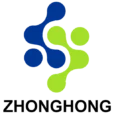
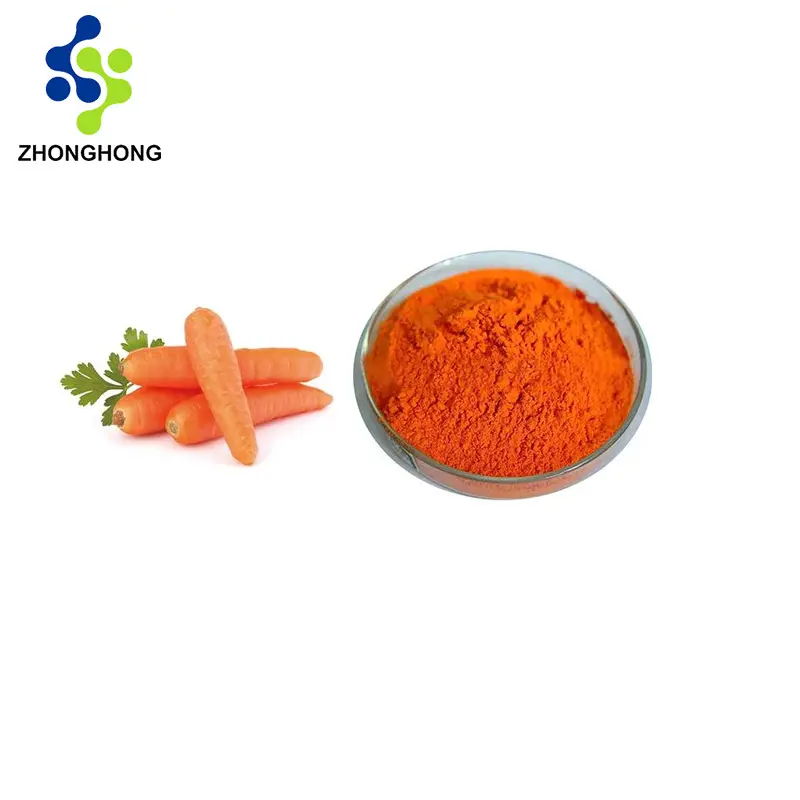
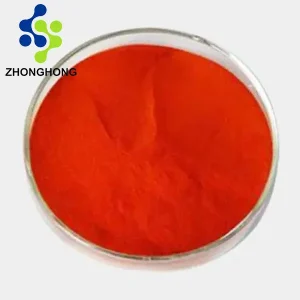

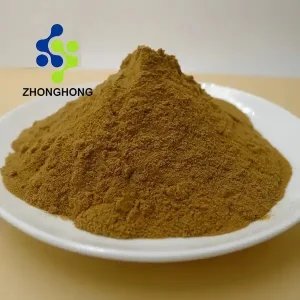
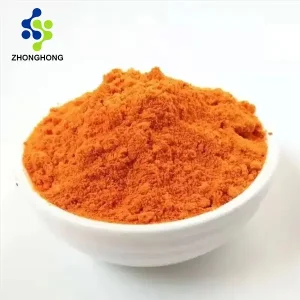
评价
目前还没有评价